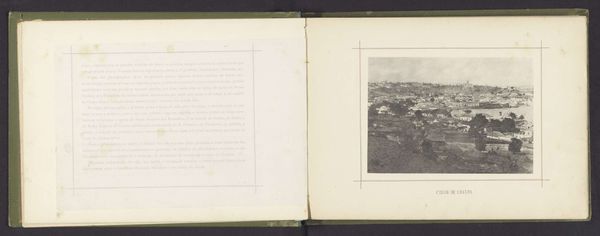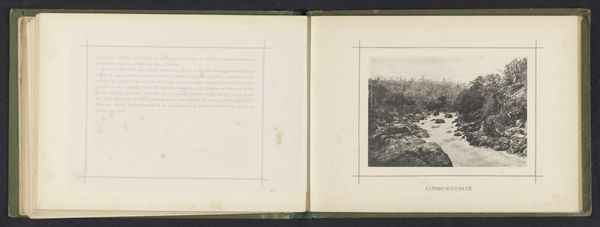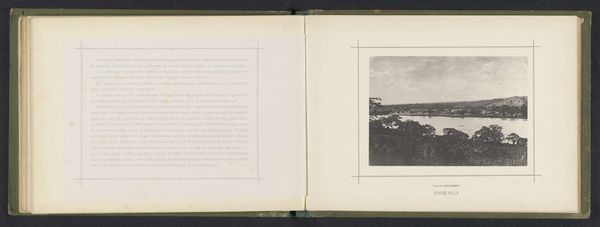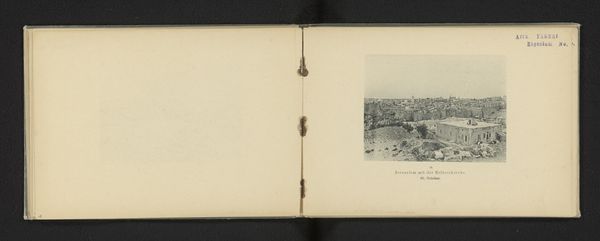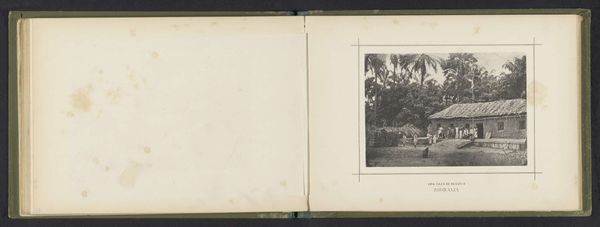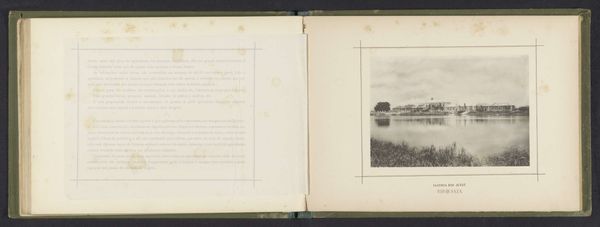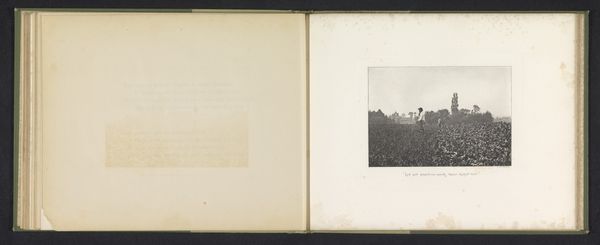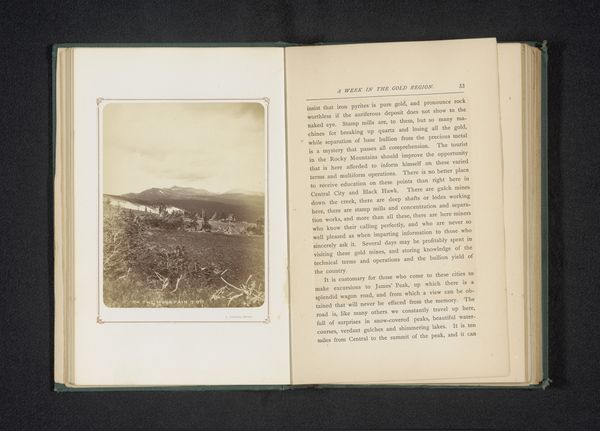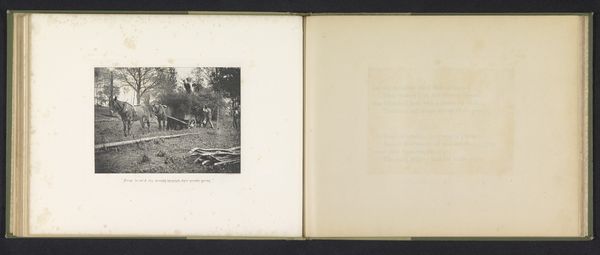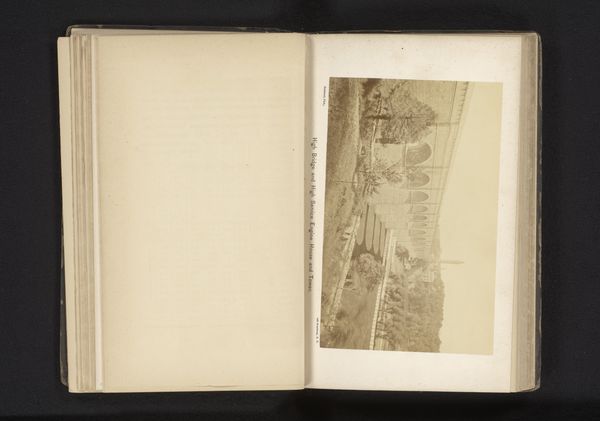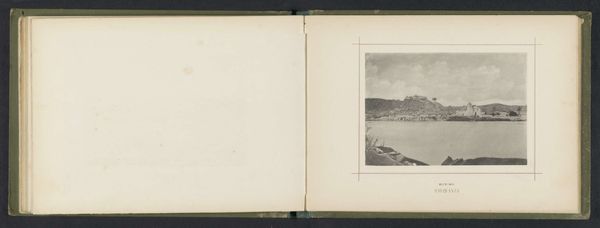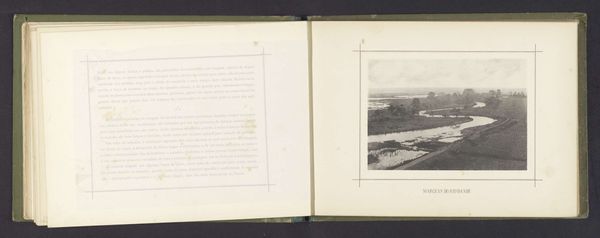
print, photography
#
aged paper
#
script typography
# print
#
sketch book
#
hand drawn type
#
landscape
#
photography
#
personal sketchbook
#
hand-drawn typeface
#
fading type
#
thick font
#
sketchbook drawing
#
sketchbook art
#
realism
Dimensions: height 114 mm, width 164 mm
Copyright: Rijks Museum: Open Domain
Curator: Here we have "Gezicht op Massangano," a print dating from before 1886, by José Augusto da Cunha Moraes. It looks like a page taken directly from a sketchbook. Editor: My initial impression is one of somber stillness. The tonal range is narrow, focusing on the subtleties within a monochrome palette. The composition feels intentionally unembellished, raw almost, which brings to my mind things of an elemental nature. Curator: Interesting, because for me the immediate draw is the clear depiction of process. Look at the aged paper, and you can almost see the artist at work, rapidly sketching the vista. The hand-drawn typeface labeling the place emphasizes that immediate, personal act of making. This piece isn't aiming for illusion, but documenting an encounter. Editor: Absolutely. And within that act of documentation, we find symbols ripe for interpretation. Notice the town nestled within the landscape, appearing almost hidden. The land seemingly guards the community; Massangano appears to have been quite important as a Portuguese fort against the kingdom of Ndongo. Curator: Exactly. And even the artistic medium – print – suggests wider distribution, and an intention for others to understand and access the landscape, even as the aging and the delicate process suggest an older kind of artistry. Editor: Yes, but think too of the act of printing, disseminating a particular image of Massangano to a wider audience. What cultural messages about place and identity does this image, circulated potentially far and wide, convey to its viewers? It's fascinating to consider the layered meanings inherent in its replication. Curator: So, the work invites questions about place, labor, and cultural exchange through print. Editor: And what it meant to represent a place in the past. Curator: True. Ultimately, this artwork prompts reflection. Editor: It's as if, in studying the representation, we understand how important the real place became.
Comments
No comments
Be the first to comment and join the conversation on the ultimate creative platform.
